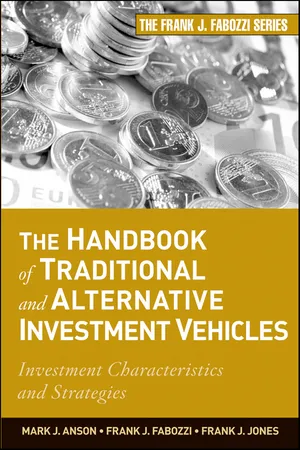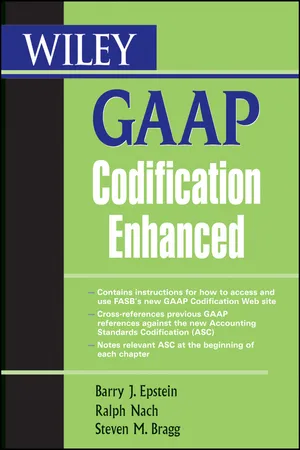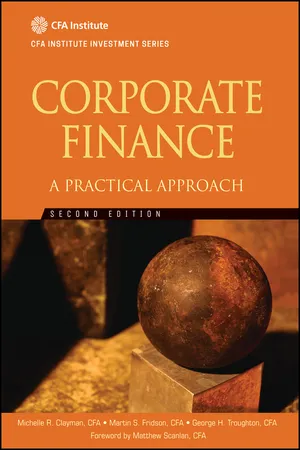Business
Stock Dividend
A stock dividend is a distribution of additional shares to existing shareholders, usually in proportion to the number of shares they already own. It is a way for a company to reward its shareholders without using cash. Stock dividends are often used to signal a company's confidence in its future performance and can also increase the liquidity of the company's shares.
Written by Perlego with AI-assistance
6 Key excerpts on "Stock Dividend"
- eBook - ePub
The Handbook of Traditional and Alternative Investment Vehicles
Investment Characteristics and Strategies
- Mark J. P. Anson, Frank J. Fabozzi, Frank J. Jones(Authors)
- 2010(Publication Date)
- Wiley(Publisher)
First, shareholders can buy shares without transactions costs—brokers’ commissions—and at a discount from the current market price. Second, the corporation retains cash without the cost of a new stock issue. There is one drawback, however. Dividends are taxed as income before they are reinvested, even though shareholders never receive the dividend. The result is similar to a dividend cut, but with a tax consequence for the shareholders: The cash flow that would have been paid to shareholders is plowed back into the corporation. Stock Distributions In addition to cash dividends, a corporation may provide shareholders with dividends in the form of additional shares of stock or, rarely, some types of property owned by the corporation. When dividends are not in cash, they are usually additional shares of stock. Additional shares of stock can be distributed to shareholders in two ways: paying a Stock Dividend and splitting the stock. A Stock Dividend is the distribution of additional shares of stock to shareholders. Stock Dividends are generally stated as a percentage of existing share holdings. If a corporation pays a Stock Dividend, it is not transferring anything of value to the shareholders. The assets of the corporation remain the same and each shareholder’s proportionate share of ownership remains the same. All the corporation is doing is cutting its equity “pie” into more slices and at the same time cutting each shareholder’s portion of that equity into more slices. A stock split is something like a Stock Dividend. A stock split splits the number of existing shares into more shares. For example, in a 2:1 split— referred to as “two for one”—each shareholder gets two shares for every one owned. If an investor owns 1,000 shares and the stock is split 2:1, the investor then owns 2,000 shares after the split. Has the portion of the investor’s ownership in the company changed? No, the investor now simply owns twice as many shares—and so does every other shareholder - (Author)
- 2019(Publication Date)
- Wiley(Publisher)
Superficially, the Stock Dividend might seem an improvement on the cash dividend from both the shareholders’ and the company’s point of view. Each shareholder ends up with more shares, which did not have to be paid for, and the company did not have to spend any actual money issuing a dividend. Furthermore, Stock Dividends are generally not taxable to shareholders because a Stock Dividend merely divides the “pie” (the market value of shareholders’ equity) into smaller pieces. The Stock Dividend, however, does not affect the shareholder’s proportionate ownership in the company because other shareholders receive the same proportionate increase in shares. Additionally, the Stock Dividend does not change the value of each shareholder’s ownership position because the increase in the number of shares held is accompanied by an offsetting decrease in earnings per share, and other measures of value per share, resulting from the greater number of shares outstanding.The second point is illustrated in Exhibit 2 , which shows the impact of a 3% Stock Dividend to a shareholder who owns 10% of a company with a market value of $20 million. As one can see, the market value of the shareholder’s wealth does not change, assuming an unchanged price-to-earnings ratio- eBook - ePub
- Barry J. Epstein, Ralph Nach, Steven M. Bragg(Authors)
- 2009(Publication Date)
- Wiley(Publisher)
Liquidating dividends. Liquidating dividends are not distributions of earnings, but rather a return of capital to the investing shareholders. A liquidating dividend is normally recorded by the declarer through charging additional paid-in capital rather than retained earnings. The exact accounting for a liquidating dividend is affected by the laws where the business is incorporated, and these laws vary from state to state.Stock Dividends. Stock Dividends represent neither an actual distribution of the assets of the corporation nor a promise to distribute those assets. For this reason, a Stock Dividend is not considered a legal liability or a taxable transaction.Despite the recognition that a Stock Dividend is not a distribution of earnings, the accounting treatment of relatively insignificant Stock Dividends (defined as being less than 20% to 25% of the outstanding shares prior to declaration) is consistent with it being a real dividend. Accordingly, retained earnings are debited for the fair market value of the shares to be paid as a dividend, and the capital stock and additional paid-in capital accounts are credited for the appropriate amounts based upon the par or stated value of the shares, if any. A Stock Dividend declared but not yet paid is classified as such in the stockholders’ equity section of the balance sheet. Since such a dividend never reduces assets, it cannot be a liability.The selection of 20% to 25% as the threshold for recognizing a Stock Dividend as an earnings distribution is arbitrary, but it is based somewhat on the empirical evidence that small Stock Dividends tend not to result in a reduced market price per share for outstanding shares. The aggregate value of the outstanding shares should not change, but the greater number of shares outstanding after the Stock Dividend should necessitate a lower per share price. As noted, however, the declaration of small Stock Dividends tends not to have this impact, and this phenomenon supports the accounting treatment.On the other hand, when Stock Dividends are larger in magnitude, it is observed that per share market value declines after the declaration of the dividend. In such situations, it would not be valid to treat the Stock Dividend as an earnings distribution. Rather, it should be accounted for as a split. The precise treatment depends upon the legal requirements of the state of incorporation and upon whether the existing par value or stated value is reduced concurrent with the stock split. - eBook - ePub
Case Studies for Corporate Finance
From A (Anheuser) to Z (Zyps)(In 2 Volumes)Volume 1: Case StudiesVolume 2: Solutions
- Harold Bierman Jr(Author)
- 2017(Publication Date)
- WSPC(Publisher)
Section 3: Dividend Policy — Share Repurchase
Salomon: Share Repurchase (1997) Microsoft (2003–2004) Berkshire Hathaway Florida Power & Light (1994) DIRECTV (2011) Apple (2014)During investment from the stockholders after a dividend, the funds flow in a circle from the firm to investors and back to the firm. Thus, with a given investment policy, in the absence of taxes and transaction costs, logically dividend policy should not affect the value of a firm. Since investor taxes are necessary for dividend policy to matter, we shall focus on the interrelationship of dividend policy and tax regulations.There have been two “dividend policy golden rules” implicitly followed by publicly held corporations. First, it is necessary to pay cash dividends to common stockholders, and second, the dividends through time must increase. It is far from obvious that these policies are optimum from the point of view of maximizing the well-being of all stockholders. We will next describe several valid reasons for dividends. Some of these reasons cannot be quantified; thus they must be kept in mind.Reasons for Dividends
One of the more popular reasons for a corporation to pay a dividend is that the corporation does not have good enough earning opportunities internal to the firm. But there may be a better way for the corporation to distribute cash to its investors.There is a provision in the Internal Revenue Code that penalizes the retention of earnings just to avoid income taxes. Although it is infrequently applied, this provision does exist as a threat to a corporation that retains and invests in passive investments. No corporation would want to pay the tax penalties associated with an excessive retention of earnings. The rule has not been applied (historically) to large publicly owned corporations.The attitude of investors is an important factor to be considered. Consistently increasing dividends are generally welcomed by investors as indicators of a corporation’s profitability and safety. Uncertainty is increased by lack of dividends or dividends that fluctuate widely. Also, dividends are thought to have an information content; that is, an increase in dividends means that the board of directors expects the firm to do well in the future. This “signaling effect” might favorably affect the firm’s common stock price. - eBook - ePub
- Alan Reynolds(Author)
- 2013(Publication Date)
- Routledge(Publisher)
While ordinary shareholders cannot be completely confident of receiving dividends, in practice most established companies provide a stream of payments that seldom decrease from one year to the next. In a bad year the directors of a company may choose to raid its distributable reserves, rather than reduce dividends or pass them altogether. An Interim Dividend is usually paid during the year and a Final Dividend (usually larger) during the next accounting year, following approval by shareholders at the Annual General Meeting. Liquidity. For most companies ordinary shares represent much the greatest part of the share capital. For this and other reasons they are the most actively traded of company securities and thus offer the greatest liquidity. However, the price that can be obtained is somewhat uncertain. It fluctuates from day to day, sometimes violently, and occasionally trading in a company’s shares is suspended by a stock exchange. Rights of Owners. Those registered as owners of ordinary shares are the theoretical owners of the company that issued them. The shareholders have a measure of control over the affairs of the company through their voting rights (proportional to the number of shares held) on all issues crucial to its future and on many routine matters as well. In practice, the control of a company with widely dispersed shareholdings does not lie with the mass of shareholders, but with the directors or professional managers employed by the company, or perhaps with a small number of large shareholders. Some companies issue Non-voting Ordinary Shares in addition to their voting counterparts. The former usually trade at slightly lower prices, since the control element is absent from their value. The issue of such shares is not encouraged by the Stock Exchange. If a company is liquidated, the owners of its ordinary shares receive all the proceeds left after the winding up, once the true liabilities have been fully discharged - eBook - ePub
Corporate Finance
A Practical Approach
- Michelle R. Clayman, Martin S. Fridson, George H. Troughton(Authors)
- 2012(Publication Date)
- Wiley(Publisher)
4.3. Global Trends in Payout Policy- For the past three years SCII has been making share repurchases, so investors are already cognizant that management is distributing cash to shareholders. The initiation of a dividend as a continuation of that policy is less likely to be interpreted as an information signaling event.
Solution to 2. A Stock Dividend has no effect on shareholder wealth. A shareholder owns the same percentage of the company and its earnings as it did before the Stock Dividend. All other things being equal, the price of a stock will decline to reflect the Stock Dividend, but the decline will be exactly offset by the greater number of shares owned.Solution to 3. As shown in the Statement of Cash Flows, the $0.40 a share annual dividend reflects a total amount of $15 million, fully using SCII’s free cash flow after acceptance of positive NPV projects. The proposal brought before the board does not suggest a commitment to maintain the annual dividend at $0.40 a share (or greater), as a stable dividend policy would typically imply. Rather, the funding of profitable capital projects will first be considered. These facts taken together are most consistent with a residual dividend policy.An interesting question is whether corporations are changing their dividend policies in response to changes in the economic environment and in investor preferences. In 2001, Fama and French36 investigated the case of disappearing dividends in the United States. They found a large decline in the number of U.S.-based industrial companies that paid dividends from 1978 to 1998. But the aggregate payout ratio in the 1990s was about 40 percent, within the 40–60 percent range typical of the 1960–1998 period. Fama and French argued that the decline in dividends was related to the large number of relatively unprofitable companies that were assuming prominence in the stock market. DeAngelo, DeAngelo, and Skinner37
Index pages curate the most relevant extracts from our library of academic textbooks. They’ve been created using an in-house natural language model (NLM), each adding context and meaning to key research topics.
Explore more topic indexes
Explore more topic indexes
1 of 6
Explore more topic indexes
1 of 4





